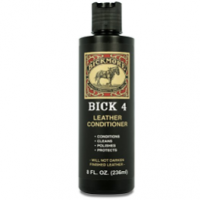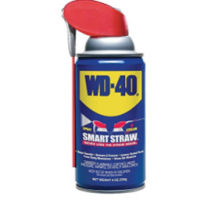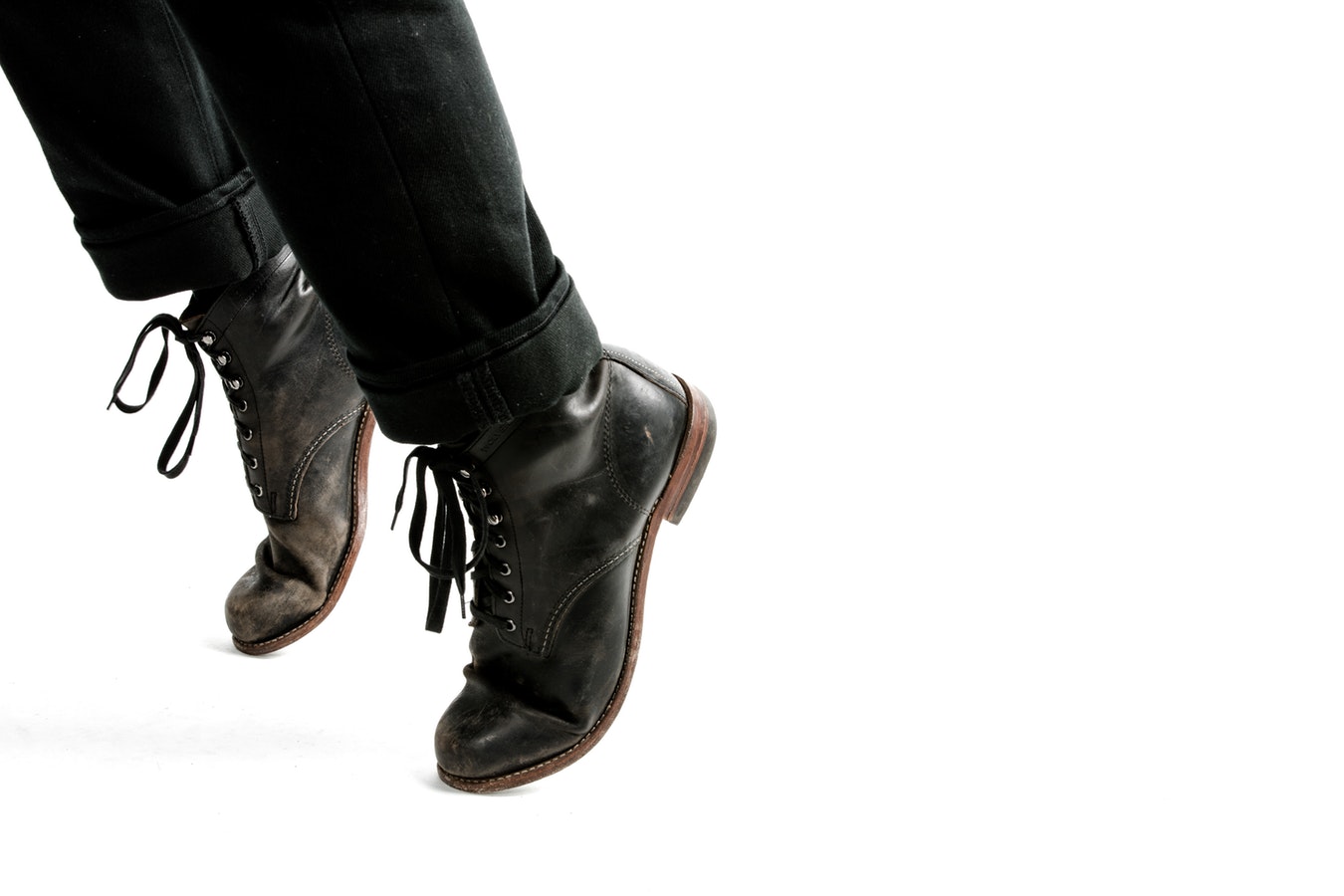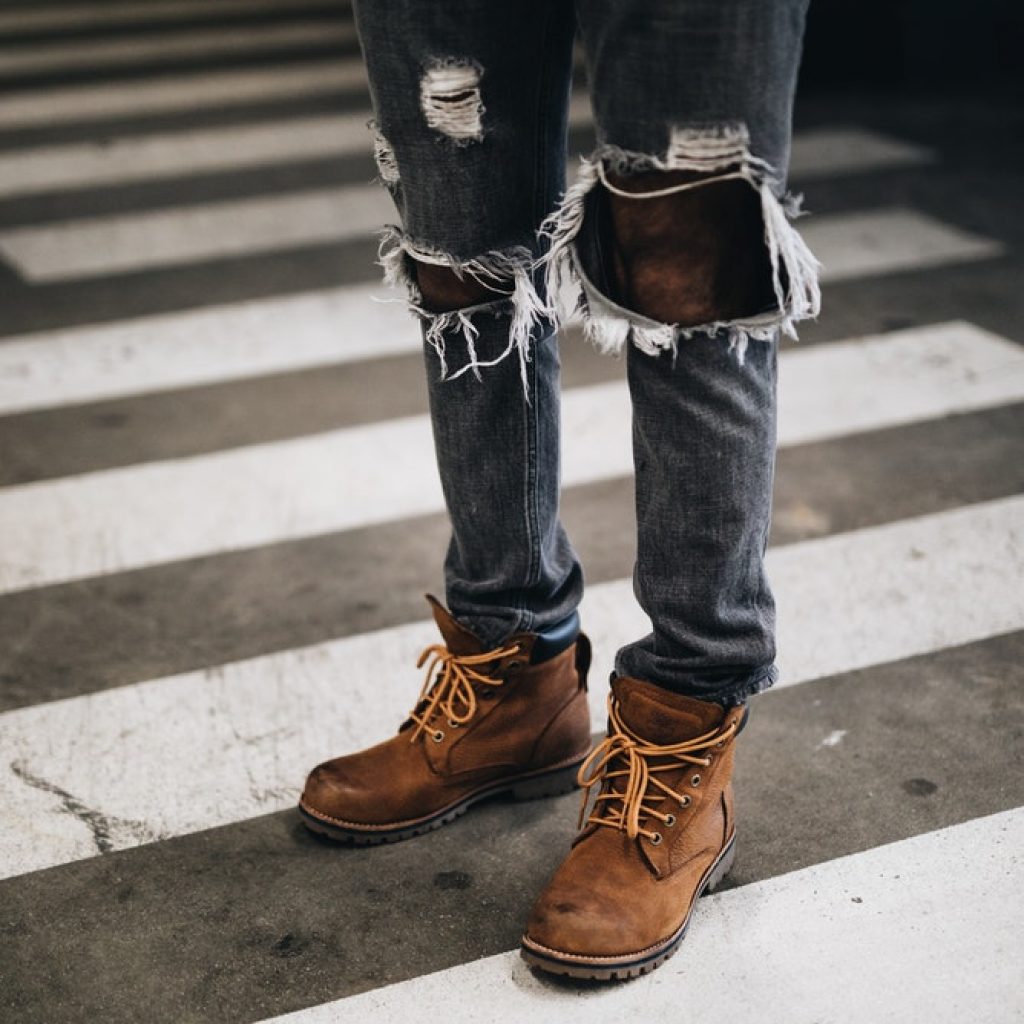how to fix squeaky shoes
It would be hard to imagine anyone putting up with squeaky shoes for too long. You might try ignoring it, hoping it would eventually go away by itself – but after the first thousand squeaks, desperation is bound to take over and you find yourself online searching for solutions.
Before jumping in, take just a moment to think about what a squeak is, why it's happening now and the possible causes behind it. Surely, you've dealt with squeaks before. That irritating cry from the clothes dryer or, that scratchy, nerve-racking screech a violin bow makes. And is there anyone who hasn't sat on a squeaky bed or driven a car with squeaky brakes? It all begs the question – why do things squeak anyway?
Good Squeaks vs Bad Squeaks
The sound you are hearing is energy, and it is invisible. It is audible because there are sound waves created by a vibrating object. The object affects the surrounding medium (in this case, your shoe) to vibrate. As the sound wave moves through a solid, liquid, or gas, particles start vibrating forwards and backward resulting in a squeak. When something squeaks it usually means there's a problem, and while it is an annoying and inconvenient sound, without it, you might drive your car not knowing your brakes were bad. The same goes for shoes. Most of the squeaks you would be aware of wouldn't be life-threatening, however, a squeaky heel on a pair of boots could break off just as you're running for a taxi. So, let's see if we can learn how to tell the difference between the two and find out what it'll take to make the squeaking stop.
Troubleshooting Your Squeaky Shoes
Some Handy DIY Tricks
Most of the time, we love our shoes to be noticed. We love the look, the comfort, and the protection they give us. But what can we do when they are turning heads because of the way they sound? There are some great ideas and easy fixes for squeaky shoes and they're very inexpensive. Here are some steps you can use to troubleshoot your shoes:
Step #1: Where is that Squeaky Sound Coming From?
Isolate where the squeaky noise is coming from by walking slowly, rocking back and forth, and raising your heels. When you've located the squeak, sprinkle that specific area with cornstarch, baby powder, or baking powder. If the shoes still squeak, take the following steps to address the problem:
- If you notice the squeak coming from the inside of the shoe, lift the insoles and sprinkle one of the above-mentioned powders along the inner seam.
- If your shoes are lined with non-removable insoles, rub the powder into the edge of the shoe base.
- If the shoe's tongue is the source of the squeak, powder in, under, and around the laces.
- If the base of the shoe is squeaking, you can take some powder and rub it into that area where it attaches to the rest of the shoe, as there could be air bubbles.
Step #2: Other Do It Yourself Methods for Stopping the Squeak
- In some cases, a leather conditioner may work. Just rub a small amount of leather conditioner into your boots and shoes, buffing with a dry cloth afterward. If the shoes are suede, be sure to apply a conditioner specifically made for suede.
- You may also try applying WD-40 to your shoes. It may prove to be more effective at stopping squeaks than leather conditioner, In the event, you use WD-40, make sure you apply it very carefully so that you don't damage your shoes.
- When a loose heel is the source of your squeak or the sole of your shoe has become unglued from the top, an application of silicone caulk may solve the problem.
- Cautiously squirt a little caulk into the hole, bind securely with rubber bands, and leave overnight allowing the caulk to dry completely. If this process does not work, take them to a shoe repair shop to evaluate the condition of the shank and hardware, in which case a shoe repair professional would serve you best.

- Bickmore Leather Conditioner
- 5 out of 5
Our rating - Will Not Darken Leather
- Price: See Here


- WD-40 Multi Use
- 5 out of 5
Our rating - Smart Straw
- Price: See Here

![]()
- Gorilla Silicone Sealant
- 5 out of 5
Our rating - Dries Clear
- Price: See Here

Recommendations:
If you notice a squeak in a pair of shoes that are still new, it may be a result of a manufacturer's defect. Trying to fix squeaky shoes yourself may void any warranties. Check the return policy from the manufacturer as you might be better off exchanging them for another pair. If you've tried fixing a loose heel with caulk, be very careful when walking in them the following day. Your heel could become loose again just after taking a few steps. Go slow and avoid steps or incline until you're sure the heel has been successfully repaired.
Fixes for Clog Style Shoes that Squeak
Dealing with Shoes and Sandals Made of Wood, Cork, and Rubber
Clogs are a very popular and diverse type of shoe or sandal. They are typically constructed with a heavy sole and can be made of wood, rubber, or cork, most often with an open heel. The material used in designing the covering the top of the feet can be made from leather, cloth, straw, and suede amongst other fabrics. Men, women, and children who enjoy wearing clogs often complain that their shoes squeak when they walk. Causes may stem from buckles attached to the shoe which end up rubbing against the leather, or the material in the heel rubbing against the floor. There are a few handy tricks for stopping the squeaking sound. Follow these steps to do it yourself:
Step #1: Using Candle Wax
If you suspect the buckle on your clogs is the cause of the clogs squeaking sound consider applying the wax from a candle also known as beeswax: a solid, yellow-tinted, non-glyceride substance related to fats and oils. It is usually secreted by bees with a plastic consistency when warm. Candle wax melts at about 145°F, and is used in making candles, topical medicines, models, castings, ointments, etc., and used by bees in the construction of their honeycomb.
- Rub the inside of both buckles (and the surface under the buckle) with candle wax. You're attempting to create a non-abrasive barrier in-between the two materials.
Step #2: Applying Liquid Silicon
Silicone combines various polymers which bring together silicon and oxygen. It contains properties that are determined by the organic groups attached to the silicon atoms including fluids, resinous, and rubbery materials. It is extremely stable at high temperatures, as well as water-repellent. It is commonly used in glues, lubricants, oils, and even in insulation, various beauty products, and of course, shoe repair.
- Using spray silicon, point the nozzle of sprayer hole on, and around the squeaky area of the shoe and spray lightly and evenly. Allow the liquid silicone to dry thoroughly before wearing the shoes. Keep away from children and avoid breathing in any fumes by wearing a mask if necessary.
Step #3: Stopping Squeaks with Baby Powder
We all know baby powder works great for keeping our little ones dry and comfy, but do we know why it works so well? Learning a little bit about baby powder may talk you into keeping it in the bathroom cabinet long after the kids are grown. Baby powder contains astringent properties making it ideal for treating diaper rashes, using it deodorizer both home and body, shoe squeaks, and various other cosmetic uses.
Once you've determined the squeak is coming from the inside of your shoe, sprinkle a light layer of baby powder in that area. Most squeaks are caused by the fabric or metal on the shoe rubs against the leather. The baby powder's astringent properties should remedy the problem.
Step #4: Using a Water-displacing Spray
Yes, it would be very easy to tell you to go out and buy a can of WD-40 but there is an alternative and, it contains natural ingredients. Just mix them together yourself and use everywhere a household lubricant is called for (including squeaky shoes):
- Easy DIY Method for mixing a water-displacing spray: Fill your 8-ounce spray bottle with three parts sunflower or olive oil to one part water. Shake and spray those squeaky shoes.
- Method #2: Mix together 90% vegetable oil with 10% acetone (acetone is the ingredient found in nail polish remover and some paint thinner. It is colorless and flammable and is the simplest ketone). This recipe was studied by a team at Drexel University in Philadelphia and was found to work as well or better in freeing rusted bolts. If you have other squeaky or rusted items in your home you're going to love this mix. It will lubricate and stop squeaks in electric fans and keep them quiet and clean barbecue grills. Have a rust accumulation on those expensive tools in your garage? This is the spray that will prevent rust from going any further and remove it from your lawn mower blades.
Step #5: The Old Rubber Cement Trick
Rubber cement is an adhesive consisting mainly of dispersion of vulcanized rubber in an organic solvent which is most often applied to glue materials together. If your shoes squeak, try this method and see how it works for you:
- Apply a thin coating of rubber cement to your shoe heels. This will form a protective layer between the floor and shoe which should quiet the squeaky sound the shoes are making. Before wearing shoes, make sure the rubber cement has completely dried.
Recommendations:
Talk about multi-tasking! There is scarcely anything recommended for the squeaky shoe problem that can't be used to fix something else. All it takes is a few minutes of your time and you can have products available to help you with cleaning shower doors, keeping baby's dry, and most everything glued back together. I hope you have fun and feel good about using fewer chemicals while saving a few extra bucks.
Diagnose and Treat Boots that Squeak
Does More Leather Equal More Squeaks?
Stopping your boots from squeaking is not so different from treating shoes that squeak. What you need to consider is the environment you're wearing the boots in. Boots are often exposed to extremely wet areas causing them to squeak when air or moisture gets trapped between the soles and insoles. As a result of these two pieces of material rubbing together, you end up with squeaky boots. Initially, when trying to stop your boots from squeaking you will:
- If you've determined that the problem is coming from excessive moisture, dry out your boots by removing the insoles and sprinkling baby powder inside.
- If the boot has air trapped inside, try some Vaseline or leather conditioner (something greasy) to the inside of the boot and under each insole to reduce friction.
- Sometimes a squeaky boot comes from a loose heel or sole. If this is the case, apply shoe glue or take them for repair by a professional shoe cobbler.
Recommendations:
Since moisture is the cause of so many squeaky shoes try stuffing your shoes or boots with a bunch of paper towels for 24 hours. You'll be able to tell by looking at and feeling the towels whether or not they've done their job. Remember also that there are many strong and powerful types of glue out there, but not all of them are recommended for gluing shoe parts together. Check the label for the most effective ways to get good results from your glue and pay attention to the materials it is best suited for.
What the Pros Think About Fixing the Squeak
Gene Hartland who works in Minnesota doing shoe repairs has some expertise in fixing squeaky shoes because he has the problem presented to him on a very regular basis. He recommends walking back and forth first in order to attempt to find where the squeak is originating from, followed by a rocking motion on your heels and toes while listening. An easy experiment is to sprinkle baby powder or cornstarch along with the stitching beneath the inner sole (if you can remove it), or anywhere you notice shoe components rubbing together. You can also rub saddle soap on the tongue of leather shoes (avoid rubbing on suede).
Secure loose heels by applying Super Glue or rubber cement, but beware: both can leave a stain and permanently damage your shoes if not cautiously applied. Check to make sure you know what materials your heels are made of; these glues will not work on heels made of urethane. If the shoes began squeaking after getting wet, try drying them out using shoe trees made of cedar, which work great in wicking (drying using capillary action) moisture away. Hartland's real-life experiences make for a great lesson on how to troubleshoot the squeak:
Step #1: Knowing Where to Look
If you are on your way to the shoe repairman, it's a good idea to wear your shoes to the shop so that they are all warmed up. This actually makes detecting the source of the squeak that much easier.
- At least 50% of shoe squeak problems are attributed to the basic structure of the shoe.
- Shoe structure includes a shank, sole, and heel counter which requires a professional to disassemble the shoe as well as reassembly.
Step #2: Randall Reichstadt in Minneapolis Says:
Air pockets can occur during manufacturing on one-piece rubber soles causing squeaking. These are usually impossible to fix so, return them and ask for a replacement pair.
Step #3: Professional Shoe Repair Saves Lives
The management at www.myshoehospital.com would like you to know that there are more than 1 billion animals slaughtered for their leather each year. By taking your shoes in for repair, you will help save one cow for every 18 repairs done.
Recommendations:
Shoe repair is definitely an art form. It takes years of experience and lots of hard work to become an expert in this craft. Think of the tools, materials, and know-how and multiply that by the dozens of things that can go wrong with a shoe. It would just be cool if people would start repairing their shoes and start utilizing the skills and expertise available to them by the pro shoe person. There are shoe repair people all over the world, and many of them have websites indicating how to send your shoes to them through the mail for repair if there isn't a location near you. What a great idea!

Some of us have never renewed our favorite footwear by taking them to a professional shoe repair person. Part of the reason could be that we have never owned anything that could be repaired – they just wore out. Another reason is, we've never thought about it.
Replacing the necessities of life has become so easy – just a point and click away. Before you throw away those fairly nice (especially if they are made of leather) shoes or boots, consider having them renewed. The benefits make so much sense such as, saving money as opposed to buying a new pair, continue wearing your favorite pair of shoes, mailing convenience, factory quality materials, high-quality workmanship, environment, and animal-friendly. Let's just say a squeak may have brought you here but, you're leaving a renewed sole!
Sources
- https://www.mnn.com/your-home/at-home/stories/how-fix-squeaky-shoe
How to fix a squeaky shoe Chanie Kirschner April 27, 2016 - http://www.answers.com/Q/What_causes_sound answers Jess McN
- https://oureverydaylife.com/how-to-stop-clog-shoes-from-squeaking-12301963.html
How to Stop Clog Shoes From Squeaking Meredith Jameson September 28, 2017 - http://www.dictionary.com/browse/silicone
- http://www.offthegridnews.com/how-to-2/how-to-make-amazing-all-natural-wd-40/comment-page-1/ How To Make Amazing 'All-Natural' WD-40 Tricia Drevets
- https://www.reference.com/beauty-fashion/home-remedies-shoes-squeak-832ffea971b869da?qo=contentSimilarQuestions
- http://journaltimes.com/lifestyles/home-and-garden/fix-it-the-squeaky-heel-gets-the-glue/article_75b2842a-9b5c-11df-b0d0-001cc4c03286.html Fix It: The squeaky heel gets the glue KRISTIN TILLOTSON Jul 30, 2010
- https://www.myshoehospital.com/shoe-repair-news/
how to fix squeaky shoes
Source: https://www.walkjogrun.net/stop-shoes-from-squeaking/
Posted by: acostakness1960.blogspot.com

0 Response to "how to fix squeaky shoes"
Post a Comment